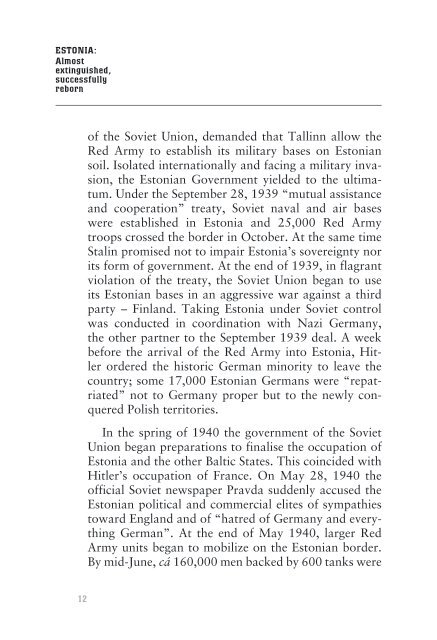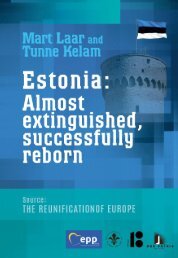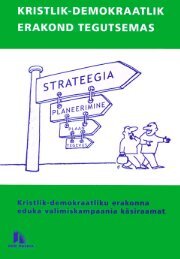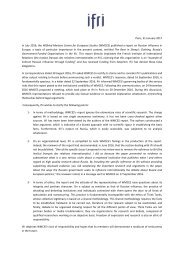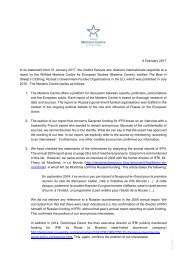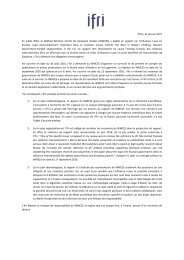ESTONIA: Almost extinguished, successfully reborn
The following text is the shortest possible review to help inform friends and guests from abroad about Estonia’s experience with foreign occupation and totalitarianism as well as its road to peacefully re-establishing national inde-pendence on the basis of democracy. Tunne Kelam Member of the European Parlament
The following text is the shortest possible review to help inform
friends and guests from abroad about Estonia’s experience with
foreign occupation and totalitarianism as well as its road to
peacefully re-establishing national inde-pendence on the basis
of democracy.
Tunne Kelam
Member of the European Parlament
You also want an ePaper? Increase the reach of your titles
YUMPU automatically turns print PDFs into web optimized ePapers that Google loves.
<strong>ESTONIA</strong>:<br />
<strong>Almost</strong><br />
<strong>extinguished</strong>,<br />
<strong>successfully</strong><br />
<strong>reborn</strong><br />
of the Soviet Union, demanded that Tallinn allow the<br />
Red Army to establish its military bases on Estonian<br />
soil. Isolated internationally and facing a military invasion,<br />
the Estonian Government yielded to the ultimatum.<br />
Under the September 28, 1939 “mutual assistance<br />
and cooperation” treaty, Soviet naval and air bases<br />
were established in Estonia and 25,000 Red Army<br />
troops crossed the border in October. At the same time<br />
Stalin promised not to impair Estonia’s sovereignty nor<br />
its form of government. At the end of 1939, in flagrant<br />
violation of the treaty, the Soviet Union began to use<br />
its Estonian bases in an aggressive war against a third<br />
party – Finland. Taking Estonia under Soviet control<br />
was conducted in coordination with Nazi Germany,<br />
the other partner to the September 1939 deal. A week<br />
before the arrival of the Red Army into Estonia, Hitler<br />
ordered the historic German minority to leave the<br />
country; some 17,000 Estonian Germans were “repatriated”<br />
not to Germany proper but to the newly conquered<br />
Polish territories.<br />
In the spring of 1940 the government of the Soviet<br />
Union began preparations to finalise the occupation of<br />
Estonia and the other Baltic States. This coincided with<br />
Hitler’s occupation of France. On May 28, 1940 the<br />
official Soviet newspaper Pravda suddenly accused the<br />
Estonian political and commercial elites of sympathies<br />
toward England and of “hatred of Germany and everything<br />
German”. At the end of May 1940, larger Red<br />
Army units began to mobilize on the Estonian border.<br />
By mid-June, cá 160,000 men backed by 600 tanks were<br />
12


